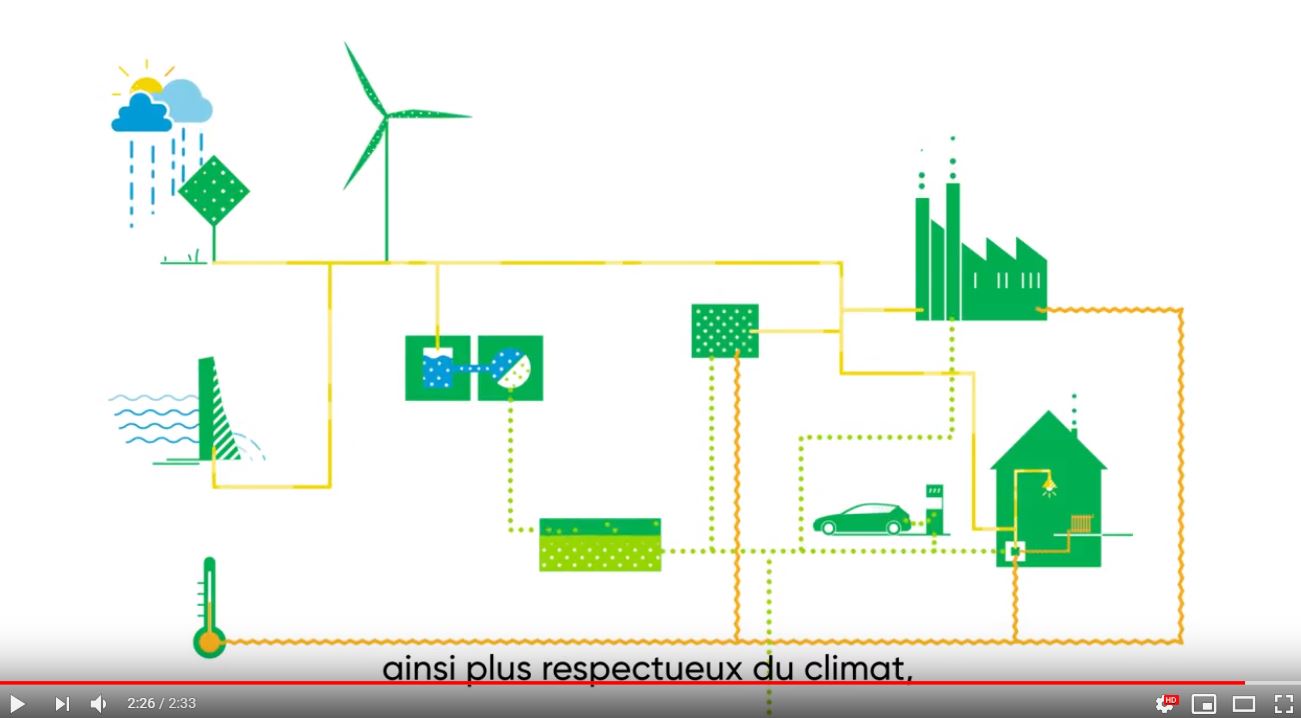Renewable gas
The term “renewable energy” immediately calls to mind electricity production using sunlight (solar), wind (wind-powered) and water (hydraulic). However, there is another form of renewable energy with significant development potential and that is green gas, or renewable gas.
Click here to watch our video on renewable gas

Renewable gas, which is carbon neutral, can be made in three different ways.
The first and best known is the methanisation of organic materials. The resulting gas, which is also called biogas or biomethane, is created from the transformation of organic materials, which may come from agriculture, industry, household waste or commercial waste. The anaerobic digestion of this waste by micro-organisms produces biogas. Biogas can be purified to the same standard as natural gas. It is then known as “biomethane”. Once it has been cleaned and odorised, it can be injected into gas pipelines.
The second way of making it consists of gasifying ligneous material – in other words wood – to obtain a “lean” gas. Once it has been washed and purified, the lean gas undergoes a process of methanisation to turn it into a “rich” gas, primarily composed of methane, which can also be injected into the networks.
The third way, methanation, is the most recent and makes use of surplus renewable electricity to produce synthetic gas. Renewable electricity, which is an intermittent and unpredictable energy like solar and wind power, cannot always be consumed immediately or stored economically. Power-to-gas technology can remedy this situation by using surplus renewable electricity to produce hydrogen (by means of water electrolysis). The hydrogen is then combined with carbon dioxide (CO2) to make synthetic methane, which is a carbon-neutral gas. There are numerous pilot projects in Europe, including the one at Falkenhagen in Germany, in which Gaznat is participating via its affiliate Swissgas.
In 2019, Swiss-produced biogas injected into the network amounted to 401 GWh. In Europe, Germany is the principal producer of biogas, followed by the UK, Italy and France.
Biogas has numerous uses such as heating, electricity production and running vehicles on natural gas/biogas.
The programme in the Eureka series from Canalalpha: "Pas d'eau dans le gaz mais plutôt du biogaz" ["Biogas, not just a pip dream", in French]

The Swiss Gas Industry Association (ASIG) promotes the development of biogas production facilities through its Biogas Fund, which subsidises new installations. In 2016, the fund distributed grants to a value of CHF 2.8 million.